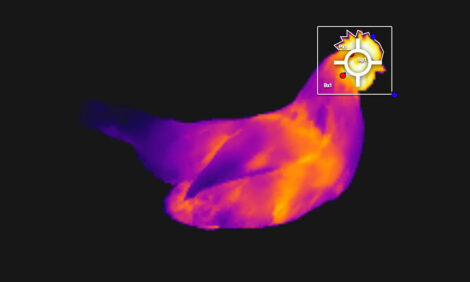



Indonesian Poultry Industry Overview, July 2003
By USDA, FAS - This article provides the pork industry data from the USDA FAS Poultry and Products Annual 2003 report for Indonesia. A link to the full report is also provided. The full report include all the tabular data which we have omitted from this article.Report highlights
The recovery of the Indonesian economy has contributed to growing consumer purchasing power and demand for poultry products. Poultry products are popular, affordable and accepted by the consumer as a source of meat protein. With almost no competition from imported poultry products, domestic broiler production is on the rise. Trade, both import and export, remains limited. The ban on poultry part imports remains in effect. Thus, market opportunity for U.S. poultry products will continue to be marginal. Some industry sources report that the GOI in interested in reaching a resolution to this "temporary ban" which has been in effect for nearly 3 years.
Situation and Outlook
Production
Indonesia’s poultry sector has fully recovered from the lows following the 1997 final crisis. Overall production in 2003 is expected to grow 16 percent or 735 million metric ton and is forecast to grow to 793 million MT (broiler only, account for around 60% of total poultry production), or 8 percent in 2004.
Economic growth and an increasingly stable security situation in rural areas has provided for improvement in poultry production. The Indonesian Rupiah (IDR) strengthened nearly 12 percent against the dollar during the first six months of 2003 compared to the same period in 2002. This has been a significant factor in broiler sector due to the increasing operating costs which are based on dollar dominated imports, including feed and breeder stock. Due to dependency on imported raw materials, the domestic chicken farming industry cannot compete with other country.
Day-Old-Chick (DOC) for broiler production in 2003 are estimated at approximately 20 million head/week. In line with the expectation for growth in the sector, DOC are forecast to grow to 22 million head/week or about 1,144 million per year in 2003.
The recovery of the poultry industry has been positively linked with the growth of the feedmill industry. Based on the information from Indonesian Feedmillers Association, feed production will reach 7.3 million tons in FY 04 (excluded cattle feed, which approximately 0.6 million MT), an increase of 8 percent from the previous year (6.8 million MT in FY 2003) or around 75 percent of the 10 million MT feedmiller capacity. As nearly 60 - 65
percent of the chicken production costs are for chickenfeed (imported corn, soybeans, etc). To reduce the dependency on the imported corn, the GOI is starting to encourage domestic corn industry to increase production.
Most of the poultry production is still carried out through contract or partnership with the large integrators. Poultry farmers depend on the them for DOC supply, poultry feed, and other necessary inputs. With a relatively low per capita broiler consumption, an increasing population and economic growth, prospect for further output growth remains bright. However processing and cold storage deficiencies continue to create bottlenecks in
distribution and marketing.
Consumption
Chicken meat has been contributing more towards Indonesia’s national meat consumption. Post estimates the broiler meat consumption in 2003 to reach 733 million MT, or 3.4 kg/capita/year. With the expectation for continued improvement in the overall economy, consumption in 2004 is forecast to continue grow to791 million tons or 3.7 kg/capita/year (215 million population in 2003). There is a trend and preference for Indonesian
consumers to consume medium birds (1.4 kg).
Development in the broiler industry has been greatly influenced, not only by the growth in the population and production, but also by the role of downstream industry, which makes broiler products more affordable for consumers. Sales of processed chicken, such as nuggets, are increasing at an average of 10 percent every year since 2000. As part of the distribution chain for frozen food products, the expansion by the retail industry is
increasing the distribution flow of nuggets. In addition, 20 percent of broiler meat production goes to franchise restaurants that serve fried chicken.
Trade
The ban on imported chicken parts implemented in September 2000 continues. As a result, poultry meat imports from the U.S. have dropped sharply. In 2000, U.S. export of chicken leg quarters totaled 11,440 MT, compared to 432 MT in 2001 and 24 MT in 202. In contrast, Indonesian chicken meat exports to Japan are increasing in the form of boneless chicken and further processed products. In 2002, the total export value of frozen poultry parts to Japan was US $4,827,735, an increase of 73 percent over 2001.
Prices
As in a typical seasonal trend, farm gate prices for live broilers at the Jakarta market, reportedly increased at around 11 percent from May (Rp. 7,350) to November 2002 (Rp. 8,128), which is the Holiday season and the peak period for demand. From December 2002 to February 2003 the price dropped 39 percent then continued to increase again in April 2003. This is the usual pattern of falling prices during the 3 to 4 month period after the
Moslem holiday season (in 2002 the period was the first week of November to the first week of December).
DOC broiler prices increased from Rp 1,750 in May 2002 to Rp. 3,500 in October 2002. This pattern is linked to the high demand for poultry meat broilers during the peak season (November-December). During January-March 2003, the price dropped sharply and according to the post sources, the price in some places reached it’s lowest at Rp.300 each. Starting in April 2003 the price rebounded back to the range of Rp. 2,000 and as usual the DOC supply was low. The integrated poultry industry used their DOC production mostly to supply their
partners.
Policy
Despite repeated efforts by the U.S. Embassy in Jakarta to seek a resolution to the GOI’s, the ban on poultry part imports (implemented in September 2000) remains in effect. While concern over "Halal" certification was used as justification for the barrier, the GOI action should be viewed as a direct response to request for protection from domestic producers. In addition, the eligibility of the six US Islamic Center which issue Halal certificates for U.S. poultry export to Indonesia remain to have no significance.
The import of chicken legs has become a controversial issue for the GOI to revoke the ruling on the ban. This issue involved the authority of the Ministry Trade and Industry and Ministry of Agriculture. Recent press article indicates that the two Ministries plan to impose certain import tariffs on the chicken leg quarters/parts to protect the local poultry industry against cheaper imports as resolution to the current ban.
There is still a confusion on the VAT (Value Added Tax) for the strategic commodities, such as animal feed. A 10% Value Added Tax was supposed to have not been implemented but the application of the tax in the field is not yet consistent and enforcement has been lax. Corn as the larger imported component for the feedmeals industry is also facing the issue of imposing higher import duty from 0 to 10-40 percent. However, the GOI has
proposed this since last year.
Investment
In line with the improving security situation, economy, domestic consumer trends, and minimal competition from imported poultry meat products, several integrators have expanded their production investment, which includes the building of new slaughter houses, broiler farms and poultry processing plants. This investments are in anticipations of increasing consumption (GOI target) for about 8kg/capita/year of poultry meat by 2005.
Further Information
To read the full report, including tables, please click here
List of Articles in this series
Poultry and Products report highlights for Various Countries
Poultry and Products report for the European Union
Source: USDA Foreign Agricultural Service - 31st July 2003








